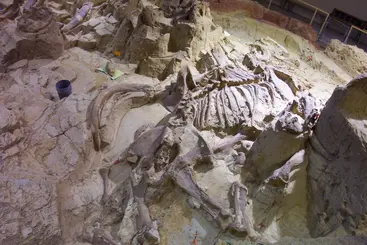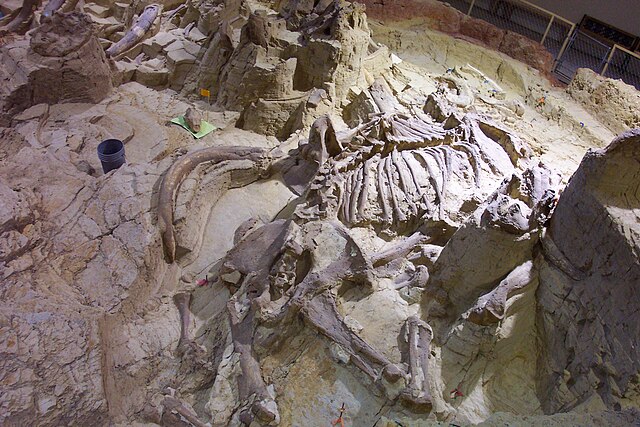South Dakota’s Mammoth Site Career: The Coolest Path in Paleontology
RAPID CITY, S.D. — In the heart of South Dakota, where history comes alive beneath the gentle slopes and verdant plains, an unexpected career has emerged as the pinnacle of coolness. According to a recent survey by career.io, the ‘Coolest Career’ in South Dakota is that of a Paleontologist working at the Mammoth Site in Hot Springs. Uncovering the mysteries of ancient mammoths, this career is not only fascinating but also pivotal in preserving our prehistoric past.
Kelly Lubbers, the Head of Collection and Conservation at the Mammoth Site, expressed her surprise and delight at this recognition. “I think it’s awesome it was voted that,” Lubbers said. “I mean, I definitely think what I do is really fun and interesting and cool, so I’m just happy to hear that other people think so as well.”
Located in the southwestern region of South Dakota, the Mammoth Site is a premier paleontological site where visitors can witness real-time preservation and excavation of mammoth fossils. The site plays a crucial role in the local community’s identity and education. The community around Hot Springs is proud of this world-renowned dig site, which attracts researchers and tourists from near and far, instilling a sense of shared heritage and scientific curiosity.

Mammoth Site Hot Springs
Over the years, the approach to paleontology at the Mammoth Site has significantly shifted. In earlier years, the focus was heavily placed on unearthing as many mammoth specimens as possible. However, as Lubbers notes, the focus has transitioned to prioritizing conservation and preservation. “We want visitors to enjoy this site as much as we do today, in the future,” she explained. “So by removing those specimens, we’re losing a little bit of context, and people won’t be able to see as much that’s there. Twenty years ago or so, we were like ‘Oh! We just need to keep finding mammoths, keep finding mammoths.’ But really, that’s shifted to instead of we need to keep digging and finding stuff, so let’s preserve what we have.”
South Dakota’s emphasis on preserving its natural and historical treasures is evident at sites like the Mammoth Site. With tourism playing a significant role in South Dakota’s economy, attractions that highlight the state’s rich paleontological history are crucial. They not only boost local economies but also foster a culture of learning and preservation that resonates with visitors and residents alike.
In her role, Lubbers is responsible for ensuring that every piece extracted from the bone bed is meticulously logged and safely stored. This meticulous process underscores the educational and scientific importance of the work done at the site. Lubbers’ passion for her field is matched by her dedication to maintaining the integrity of the Mammoth Site for future generations, a sentiment warmly felt across the community.
Encouraging youth to embark on this cool career, Lubbers advises them to study hard and keep an open mind. “Paleontology, one of the great things about it is it’s so versatile,” she said. “You can do education with it. You can do the preparation, conservation, collections management, and research. So there are so many different routes and overlaps within the sciences that just getting experience in a variety of things will definitely help you.”
As South Dakota continues to champion education in the sciences, opportunities abound for aspiring scientists in various fields, particularly in paleontology. The state’s educational institutions, from local high schools to universities, offer programs that can launch students into this intriguing field.
Kelly Lubbers’ enthusiasm for her role as a steward of history at the Mammoth Site is palpable. “I’m very grateful for the opportunity to work on and preserve this site,” she shares. Her hope is that the work being done today will keep the site thriving for another century and beyond, continuing to attract and educate visitors from all over the world.
With its majestic landscapes and rich history, South Dakota remains a timeless treasure trove waiting for eager hands and minds to unlock its secrets. For those ready to dig deep, both literally and figuratively, a cool career awaits in the heart of the Mammoth Site.
For more information about visiting the Mammoth Site or exploring career options in South Dakota’s paleontology sector, visit the Mammoth Site’s official website.
